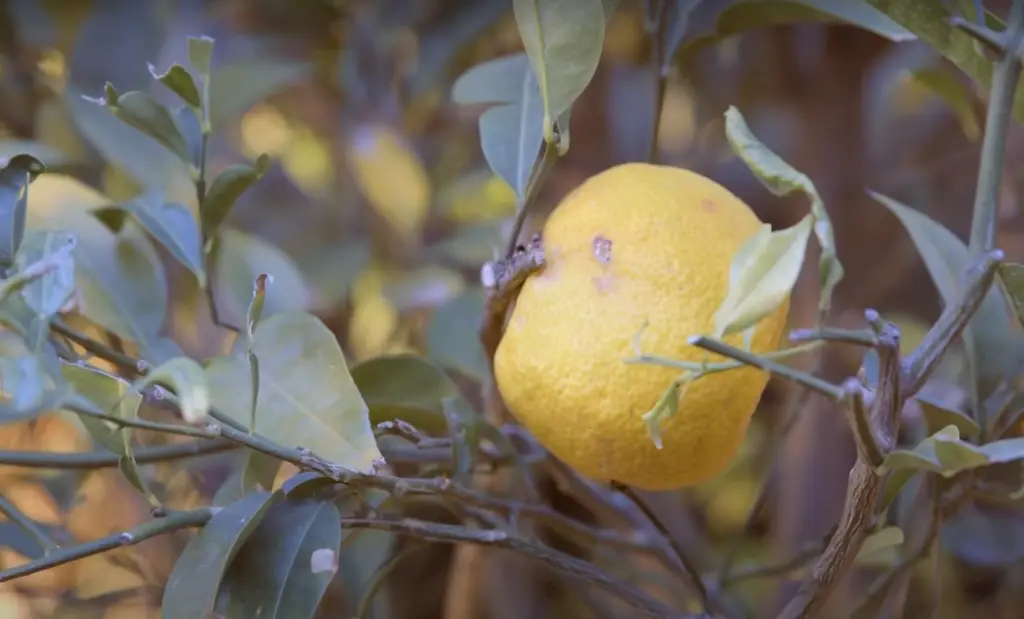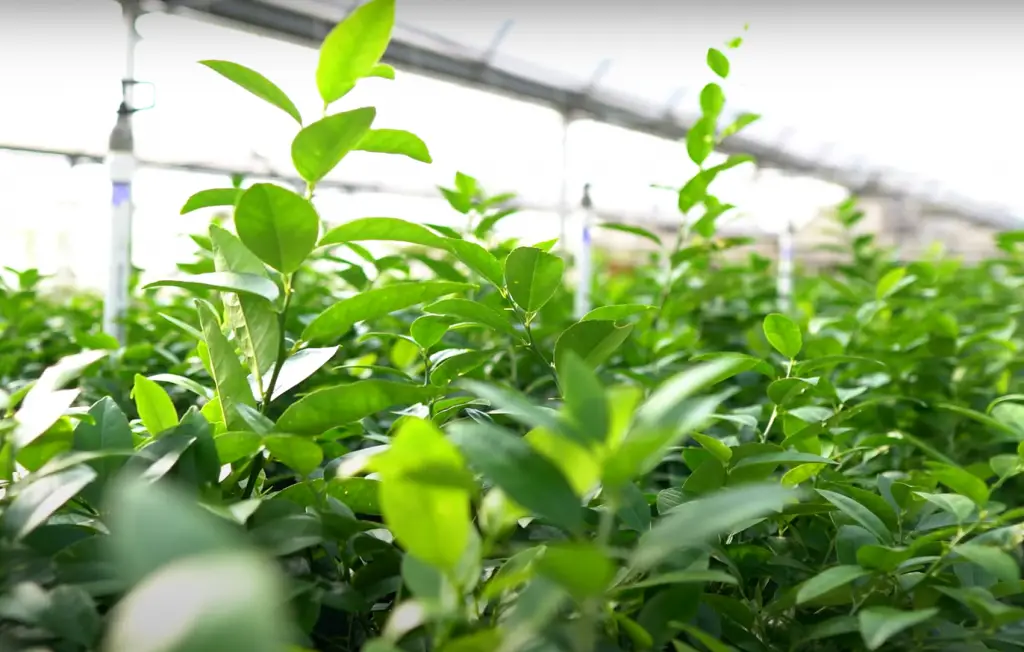Limes are an amazing fruit, full of flavor and nutritional benefits. But did you know the plant that produces these luscious fruits comes in a variety of shapes and sizes? From small dwarf trees to tall varieties, there is something for everyone when it comes to lime trees! In this blog post, we’ll explore all the types of lime tree options available – from common popular selections like Tahiti limes to more exotic choices like key limes. We’ll also dive into information about care tips and how-tos for growing each type of citrus tree successfully so that you can have your own little slice of paradise indoors or outdoors!
10 Types of Lime Trees
Each lime type has its own unique traits that make it better suited for certain climates or recipes depending on your needs.

With proper care, you will be able to enjoy a flourishing citrus tree in your yard for years to come!
- Dwarf Key Lime (Citrus aurantiifolia): Dwarf key limes are small trees that grow to a maximum of 10 feet tall and produce tart, juicy limes approximately 1 inch in diameter. These trees have glossy green foliage and fragrant white flowers and prefer full sun exposure.
- Kaffir Lime (Citrus hystrix): Kaffir lime trees are an evergreen species with a strong citrus scent that grows up to 15 feet tall. The leaves of this tree are highly prized for their use in Thai curries, soups, and sauces. The fruits of the kaffir lime tree are small and bumpy, but intensely fragrant. They require full sun exposure and average watering.
- Persian Lime (Citrus x latifolia): The Persian lime is the most common variety of lime grown in the United States, typically reaching 15-20 feet tall. It produces large fruit that are less acidic than other varieties and has glossy green foliage. This type of lime requires full sun exposure for optimal growth, as well as regular waterings during dry spells.
- Bearss Lime (Citrus x aurantifolia): Also known as Tahiti limes, Bearss limes are similar to Key limes but larger in size with a milder flavor that is more suitable for eating fresh. These trees can reach up to 25 feet and have glossy green foliage and fragrant white flowers. Bearss limes prefer full sun exposure and regular watering during dry spells.
- Mexicola Grande Lime (Citrus x mexicana): Mexicola grande limes are smaller than other types, growing to a maximum of 10 feet tall. They produce small, tart fruit with a thin skin that is excellent for juicing or flavoring drinks and dishes. This type of lime prefers full sun exposure and regular waterings during dry spells.
- Saint Michael’s Lime (Citrus × aurantiifolia): Saint Michael’s lime is also known as the Tahiti lime and shares many characteristics with the Bearss lime. It is a larger variety of Key limes, producing fruit that is larger yet still tart. This tree can reach up to 25 feet tall.
- Rangpur Lime (Citrus x limonia): The rangpur lime is an unusual hybrid of mandarin orange and lemon that produces small, tart fruit with a distinctive flavor used in traditional Indian dishes. This type of lime tree grows to approximately 15 feet tall and has glossy green foliage. It prefers partial sun exposure and regular watering during dry spells.
- Ponderosa Lemon-Lime (Citrus × limon × aurantifolia): The ponderosa lemon-lime is a hybrid of the lemon and Key lime that produces large, tart fruit. This type of tree grows to approximately 15 feet tall with glossy green foliage. It requires full sun exposure and regular waterings during dry spells.
- Australian Finger Lime (Citrus australasica): The Australian finger lime is an unusual species of lime that produces small, round fruits with juicy flesh filled with vesicles of tart juice inside. This type of tree can reach 20 feet tall and prefers partial sun exposure as well as regular waterings during dry spells.
- Kieffer Lime (Citrus × latifolia): The Kieffer lime is a hybrid between the mandarin orange and the lemon that produces medium-sized, mild fruit. This variety of lime tree can reach up to 20 feet tall and has glossy green foliage. It prefers full sun exposure and regular waterings during dry spells.[1]
What are the Specific Highlights of Lime Trees?
Lime trees are an incredibly attractive, low-maintenance tree that can really bring vibrancy to any landscape. Their bright green foliage and fragrant flowers make them eye-catching additions to gardens or yards, while their ease of care makes them a great choice for busy homeowners.
In addition to being visually appealing, lime trees produce edible fruit for those who want to enjoy its tart flavor in baked goods or beverages. The bark is also used in herbal medicines and can be harvested from older trees without harm.
They’re also tolerant of drought conditions once established and require little pruning or maintenance other than watering regularly.
When planted in the right location, lime trees can provide years of beauty and enjoyment. They’re resistant to diseases and pests, making them a great choice for novice gardeners or those who don’t want to spend too much time on maintenance and care. With the proper attention, they’ll reward you with plenty of limes throughout the year. Plus, their beautiful blossoms will bring butterflies and bees into your yard all summer long! So if you’re looking for an attractive tree that adds color and flavor to your landscape, consider adding a lime tree. [2]
How to Grow a Lime Tree?
Once you have the perfect spot picked out and your lime tree is planted, it’s time to learn how to properly care for your new plant! Here are a few tips for growing a happy and healthy lime tree:
Water on a regular basis
Make sure that your lime tree gets enough water. Depending on the climate you’re in, you may need to water more or less often. In general, give your lime tree one inch of water per week—either from rain or by manual irrigation.
Prune correctly
Pruning is important for keeping your lime tree healthy. Remove dead branches, diseased branches, and any crossing branches that can cause damage as they rub against each other. It’s also important to shape your tree by cutting back branches that are growing out of the desired shape. [3]
Try fertilizer
Fertilizing is key for helping your lime tree stay healthy and producing lots of juicy limes! Apply fertilizer in the spring, then again in midsummer and fall.
Pest protection
Pests can be a major issue with citrus trees like lime trees. Keep an eye out for any signs of infestation and take action quickly if you see any pests on your tree. You may need to use pesticides or other methods to combat them. [4]

Following these tips should help you keep your lime tree happy and healthy!
Is Companionship with Other Plants Important for a Lime Tree?
Companionship with other plants is important for a lime tree. By creating companion plantings around your lime tree, you can help promote healthy growth and even help protect it from diseases. When planting around a lime tree, look for other plants that have similar needs as far as light and water requirements. Some good companion plants include herbs, vegetables, and flowers like mint, tomatoes, daisies, and marigolds. These plants will help keep the soil moist and improve the drainage of the area around your lime tree while also providing nutrients to the soil. Additionally, companion planting can also help attract beneficial insects to your garden which can provide natural pest control. For example, flowering plants such as lavender or chamomile will attract bees and other pollinators to the area, while herbs or vegetables like chives can help deter harmful insects. By planting a variety of companion plants around your lime tree, you can create an inviting environment for beneficial insects and promote healthy growth in your lime tree. [5]
In addition to companion planting, another important factor for successful growth of your lime tree is proper pruning. Pruning helps encourage new growth, which will help keep the foliage thick and lush, as well as allow more sunlight into the center of the plant. It also makes it easier to manage the size of your lime tree since it won’t get too large. Prune off any dead branches or stems as soon as possible to reduce disease problems and help encourage new growth. Finally, be sure to water your lime tree regularly during dry periods and fertilize it every few months to ensure proper growth.
Overall, companion planting is an important part of growing a healthy lime tree that will provide delicious fruit for years to come. By creating the right environment with other plants around your lime tree, you can help promote its health and even protect it from disease.
Are Lime Trees Worth Fertilizing?
It depends on your specific situation. Generally speaking, lime trees benefit from a regular application of fertilizer, especially if they are planted in nutrient-poor soil or exposed to environmental stresses such as drought or extreme temperatures.

Fertilizers can help promote healthy growth and improve the tree’s resistance against pests and disease. However, too much fertilizer can cause more harm than good, so it’s important to apply fertilizers in moderation and according to the manufacturer’s instructions.
There are several types of fertilizers that can be used on lime trees, including water-soluble granular and liquid fertilizers. For best results, you should consult with an experienced arborist to determine the best fertilizer for your specific situation. With proper care and fertilization, lime trees can be a rewarding addition to any landscape. [6]
How to Select a Good Place to Plant Lime Tree?
In order to select a good place for planting a lime tree, there are several factors to consider.
- First, the soil type must be suitable for lime trees. Lime trees require well-drained, slightly acidic soil with pH levels between 6 and 7.5. Additionally, the soil should also have lots of organic matter such as compost and manure in order to ensure healthy growth.
- Second, it is important to select an area where the tree can receive plenty of sunlight. Lime trees require full sun in order to thrive and produce fruit, so choose an area that receives at least six hours of direct sunlight per day. If possible, find a spot with some afternoon shade as well since this can help protect the tree from intense heat. [7]
- Third, the area should be free from pests and diseases. Lime trees are prone to various fungal diseases, such as anthracnose and powdery mildew. To prevent these issues, make sure to choose an area that is away from other infected plants or affected by poor drainage. Additionally, keep an eye out for insects that may damage the tree’s leaves or fruit.
- Fourth, it is important to choose a place where the tree will have plenty of room to grow. If planting in a pot, select one with ample space for roots and branches to spread out without becoming cramped or root-bound. When selecting an outdoor location for planting a lime tree, make sure there is adequate space for the tree to reach its full height and spread out.
- Finally, in order to ensure that a lime tree can produce plenty of fruits, it should be planted near other mature citrus trees. While lime trees are self-fertile, they are pollinated more efficiently by having multiple types of citrus trees nearby. This allows cross-pollination to occur which helps promote healthy fruit production. [8]
By taking into consideration all of these factors, you will be able to find an optimal place for planting your lime tree so it can thrive and provide delicious fruits for many years to come.
When And How Must Fruit Be Harvested from a Lime Tree?
Fruit from a lime tree should be harvested when it is ripe. This usually occurs in late summer or early fall depending on the variety of lime tree you are growing. To tell if the fruit is ripe, gently press against it and feel for firmness. The limes should have a greenish yellow hue and will yield to slight pressure.
When harvesting limes, use a knife to cut them off at the stem rather than pulling them off by hand. This prevents damage to both the fruit and leaves on the tree.
Once harvested, store limes in a cool place away from direct sunlight until ready to use. Enjoy the delicious limes in your favorite recipes, drinks, or snacks!
The best time for harvesting limes is when they are ripe. However, you can also pick them a little early if needed and allow them to ripen off the tree. To do this, harvest the fruits when they still have some green on them but not too much. Place the limes in an open container at room temperature and allow them to continue ripening until they reach desired color and sweetness. This method will help preserve their flavor and quality even if harvested before peak ripeness. Keep in mind that late harvested limes may not store well so be sure to use or freeze them within a few days of picking. [9]
Are There Thorns on Lime Trees?
While some citrus fruit trees, such as lemon and orange trees, are known for their sharp thorns or spines, lime trees lack these protective defenses. Lime trees typically have smooth, thin bark that is relatively easy to tear off if damaged. Some cultivars of lime tree may be more resistant to damage due to thicker bark but they still lack the characteristic thorns seen in other citrus species. Therefore, when planting a lime tree you don’t need to worry about protecting yourself from painful pricks! Additionally, this makes harvesting limes much easier compared to harvesting oranges or lemons since there won’t be any sharp thorns getting in your way. [10]
What Are the Benefits of Growing a Lime Tree?
Growing a lime tree can provide numerous benefits. First, limes are an incredibly versatile fruit that can be used in many dishes and drinks to add flavor and brightness. Lime juice is known for its acidic properties, making it great for marinades or adding zest to desserts. In addition, limes contain vitamins and minerals such as calcium, magnesium, potassium, vitamin C and folate. Eating limes may help boost your immune system and protect against some diseases.
Another benefit of growing a lime tree is the aesthetic value it brings to your home or garden. The trees are small but full-branched with glossy green leaves that offer beautiful foliage year round. Plus, during the spring months you’ll get to enjoy the sight of bright white or yellow-green flowers. The fruit itself is a pretty green color, and you’ll get to pick it directly from the tree in late summer or early fall.

Finally, growing your own lime tree can be an incredibly rewarding experience. Seeing your hard work come to fruition as your tree bears fruit can make you feel proud and fulfilled. Plus, having access to freshly picked limes right outside your door is sure to make any meal or beverage more special. [11]
FAQs
What is the most common lime tree?
The most common lime tree is the Mexican Lime, also known as the Key Lime. It is a small evergreen tree that produces tart, green limes. Other popular varieties of lime trees include Tahiti Limes, Persian Limes, and Kaffir Limes.
What is the sweetest lime tree?
The sweetest lime tree is the Rangpur Lime (Citrus limonia), also known as the Mandarin Lime. It has a fruity aroma and flavor, with a hint of sweetness. The fruit is small and round, with greenish-yellow skin that turns to an orange-red when fully ripe. The pulp is juicy and flavorful, with an acidic yet sweet taste. The tree is vigorous and productive, bearing fruits in clusters throughout the year. It can be grown in most climates and does best in warm regions with plenty of sunshine. With regular care and pruning, this tree will produce abundant crops of tasty limes for years to come.
What are the best limes to eat?
The Mexican lime, also known as the Key lime, is one of the most popular varieties for eating. It has a juicy, tart flavor and a refreshing aroma that makes it great for adding zing to dishes or beverages. The Persian lime is another variety often seen in stores and used widely in cooking and baking. Its thin rind makes it easier to juice than other limes, and its sweet-tart flavor adds an extra layer of flavor to recipes. Kaffir limes are fragrant limes with bumpy skin that are popular in Southeast Asian cuisine. The juice isn’t usually consumed but rather used to add fragrance to food; its zest can be added as a garnish or used for flavoring sauces.
What is the easiest lime to grow?
The easiest lime to grow is the key lime. Key limes are very small and have a thin, yellowish-green skin that darkens when ripe. They are also very fragrant and can be used for zesty recipes such as key lime pie or mojitos. Key limes are fairly easy to take care of and require only minimal pruning. They prefer warm climates but can also survive in cooler temperatures if protected from frost. With proper care, these trees produce an abundance of delicious fruits throughout the year!
Useful Video: Growing a Lime Tree | EVERYTHING You Need To Know
Conclusion
Ultimately, selecting the right type of lime tree and providing proper care are the two key elements for cultivating a citrus powerhouse in your garden. Growing limes is low-maintenance and promises many rewards that will bring pleasure to you and your family all year long: from zesty flavor additions to tasty cocktails, to healthful antioxidant laden snacks. So go ahead, give it a try. Happy growing!
References:
- https://www.progardentips.com/types-of-lime-trees/
- https://plantura.garden/uk/fruits/lime-tree/lime-tree-overview
- https://www.gardeningknowhow.com/edible/fruits/lime/lime-tree-tips-care-of-lime-trees.htm
- https://www.bunnings.com.au/diy-advice/garden/planting-and-growing/how-to-grow-a-lime-tree
- https://www.lovethegarden.com/au-en/article/companion-planting-chart-fruit-citrus-trees
- https://justagric.com/best-fertilizer-for-lime-tree/
- https://www.bunnings.com.au/diy-advice/garden/planting-and-growing/how-to-grow-a-lime-tree
- https://www.starkbros.com/growing-guide/how-to-grow/fruit-trees/citrus-trees/location
- https://www.gardeningknowhow.com/edible/fruits/lime/lime-tree-harvest-time-when-to-pick-a-lime-from-a-tree.htm
- https://www.gardeningknowhow.com/edible/fruits/citrus/thorns-on-citrus-trees.htm
- https://paylesshardwareandrockery.com/2022/04/26/top-5-reasons-you-should-own-citrus-fruit-trees/










Leave a Reply
View Comments